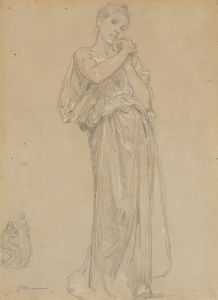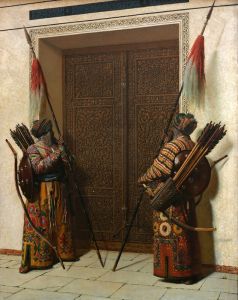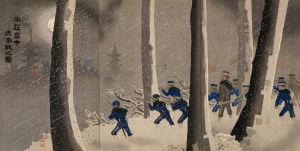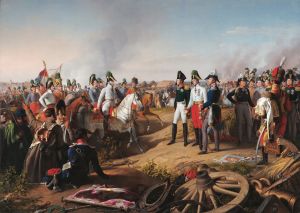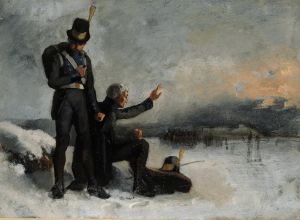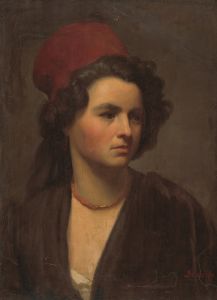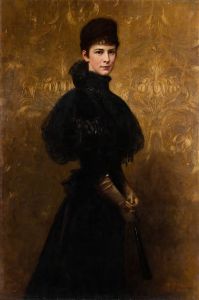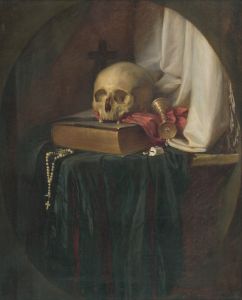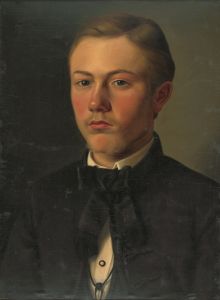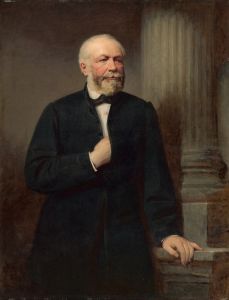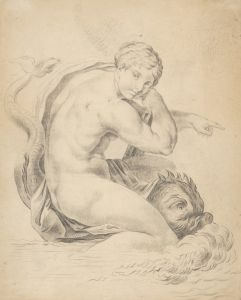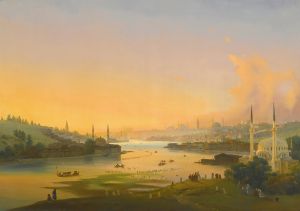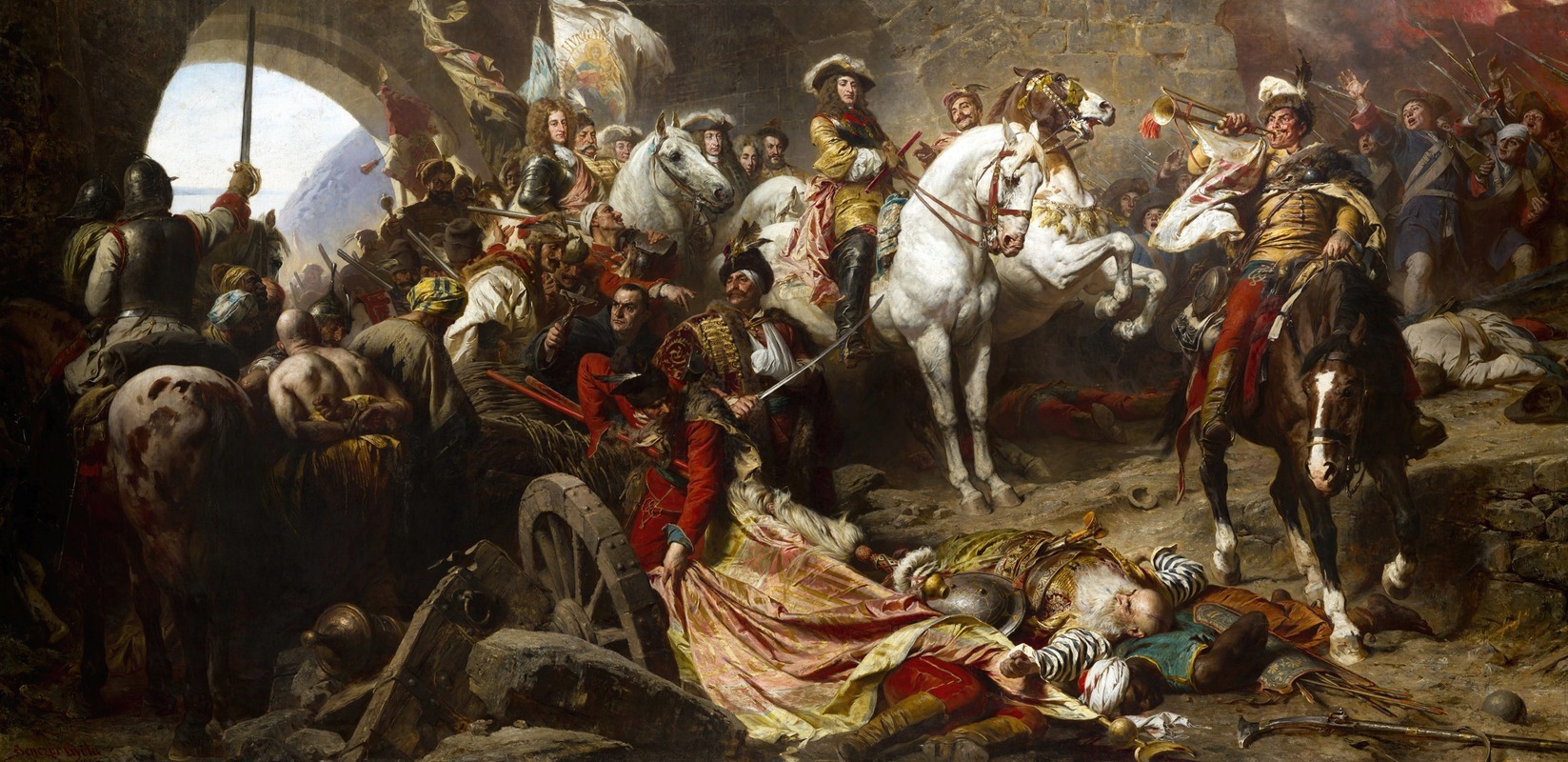
Reoccupation of Buda castel in 1686
A hand-painted replica of Gyula Benczúr’s masterpiece Reoccupation of Buda castel in 1686, meticulously crafted by professional artists to capture the true essence of the original. Each piece is created with museum-quality canvas and rare mineral pigments, carefully painted by experienced artists with delicate brushstrokes and rich, layered colors to perfectly recreate the texture of the original artwork. Unlike machine-printed reproductions, this hand-painted version brings the painting to life, infused with the artist’s emotions and skill in every stroke. Whether for personal collection or home decoration, it instantly elevates the artistic atmosphere of any space.
The painting "Reoccupation of Buda Castle in 1686" by Gyula Benczúr is a significant work of art that captures a pivotal moment in European history. Created by the renowned Hungarian painter Gyula Benczúr in 1896, this painting commemorates the successful recapture of Buda Castle from Ottoman forces, a crucial event in the Great Turkish War.
The historical context of the painting dates back to the late 17th century, during a period when the Ottoman Empire had extended its reach into Central Europe. Buda, now part of Budapest, Hungary, had been under Ottoman control since 1541. The siege and subsequent reoccupation of Buda Castle in 1686 was part of a larger military campaign led by the Holy League, a coalition of European powers including the Habsburg Monarchy, the Polish-Lithuanian Commonwealth, and the Republic of Venice, among others. This coalition aimed to push back Ottoman advances and reclaim territories in Europe.
The siege of Buda began in July 1686 and was a well-coordinated effort involving a large army under the command of Charles V, Duke of Lorraine, and Prince Eugene of Savoy. The siege lasted several months, characterized by intense fighting and strategic maneuvers. The turning point came on September 2, 1686, when the Holy League forces launched a decisive assault on the castle, eventually breaching its defenses and reclaiming it from the Ottomans.
Gyula Benczúr's painting vividly depicts this moment of triumph. Known for his historical and genre paintings, Benczúr was a master of capturing dramatic scenes with meticulous attention to detail. In "Reoccupation of Buda Castle in 1686," he portrays the victorious Christian forces entering the castle, with a composition that emphasizes the chaos and intensity of battle. The painting is notable for its dynamic arrangement and the use of light and shadow to highlight the central figures and actions.
Benczúr's work is celebrated not only for its artistic merit but also for its historical accuracy and the way it evokes the spirit of the era. The painting serves as a visual narrative of the liberation of Buda, symbolizing the resilience and determination of the European forces against the Ottoman Empire. It reflects the broader context of the struggle between European powers and the Ottomans, a theme that resonated deeply with audiences in the 19th century, particularly in Hungary, where national identity and historical memory were being actively shaped.
Today, "Reoccupation of Buda Castle in 1686" is housed in the Hungarian National Gallery in Budapest, where it continues to be a significant cultural and historical artifact. The painting not only commemorates a key historical event but also stands as a testament to Gyula Benczúr's skill as an artist and his contribution to Hungarian national heritage. Through his work, Benczúr has provided a lasting visual record of a momentous event that helped shape the course of European history.





